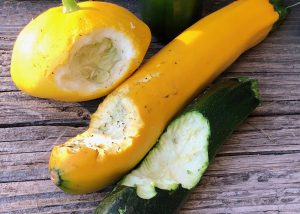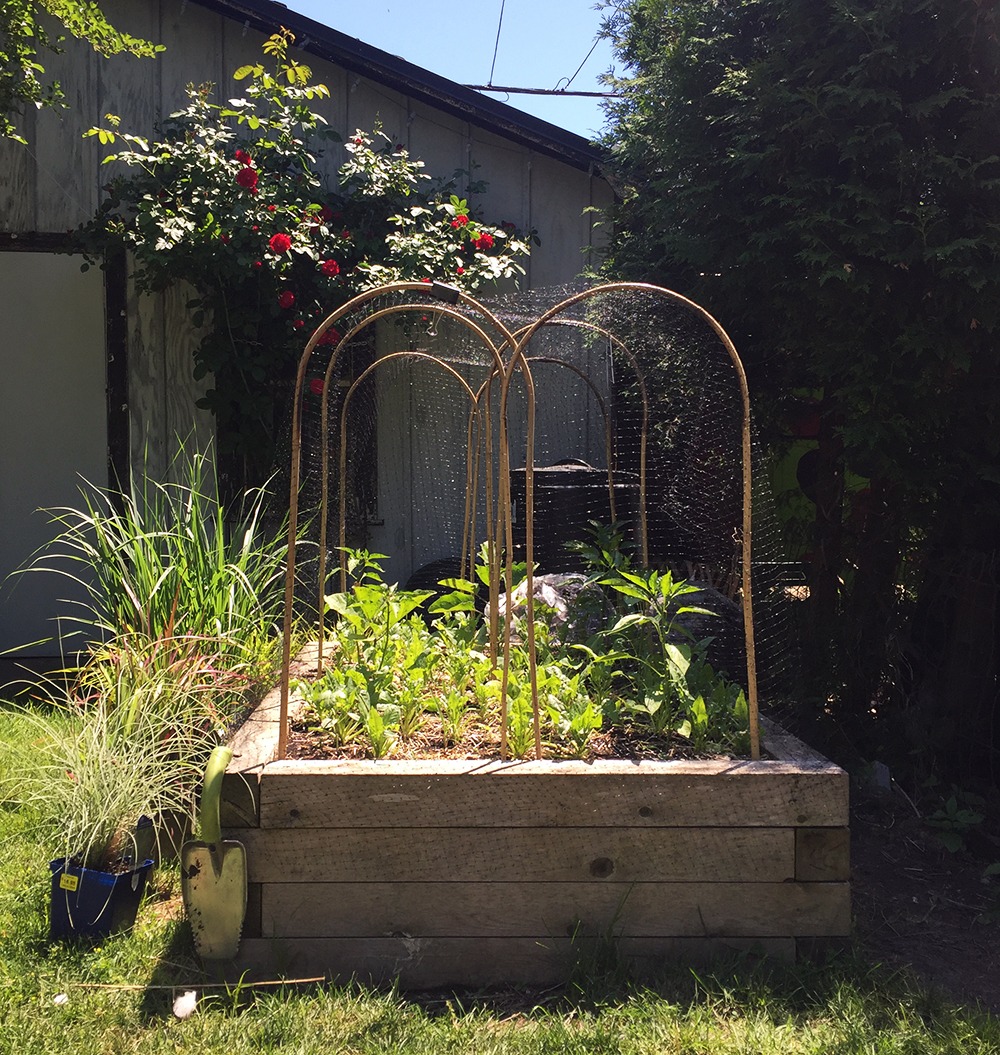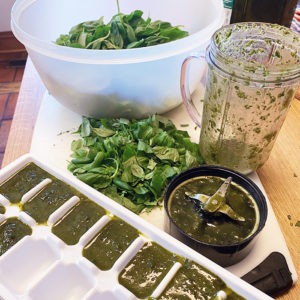Harvest Know-How
September is upon us and overflowing baskets of garden goodies are everywhere. But harvesting in Zones 5 and 6 is not just an autumn endeavour. It’s a season-long process that begins with the first herbs of April, rolls right into asparagus, ramps and cold hardy greens in May, and continues through early summer with the first appearance of heat-loving crops and last year’s garlic. By late summer our fridges, counters and cold cellars are crammed with a stunning array of homegrown goodness.
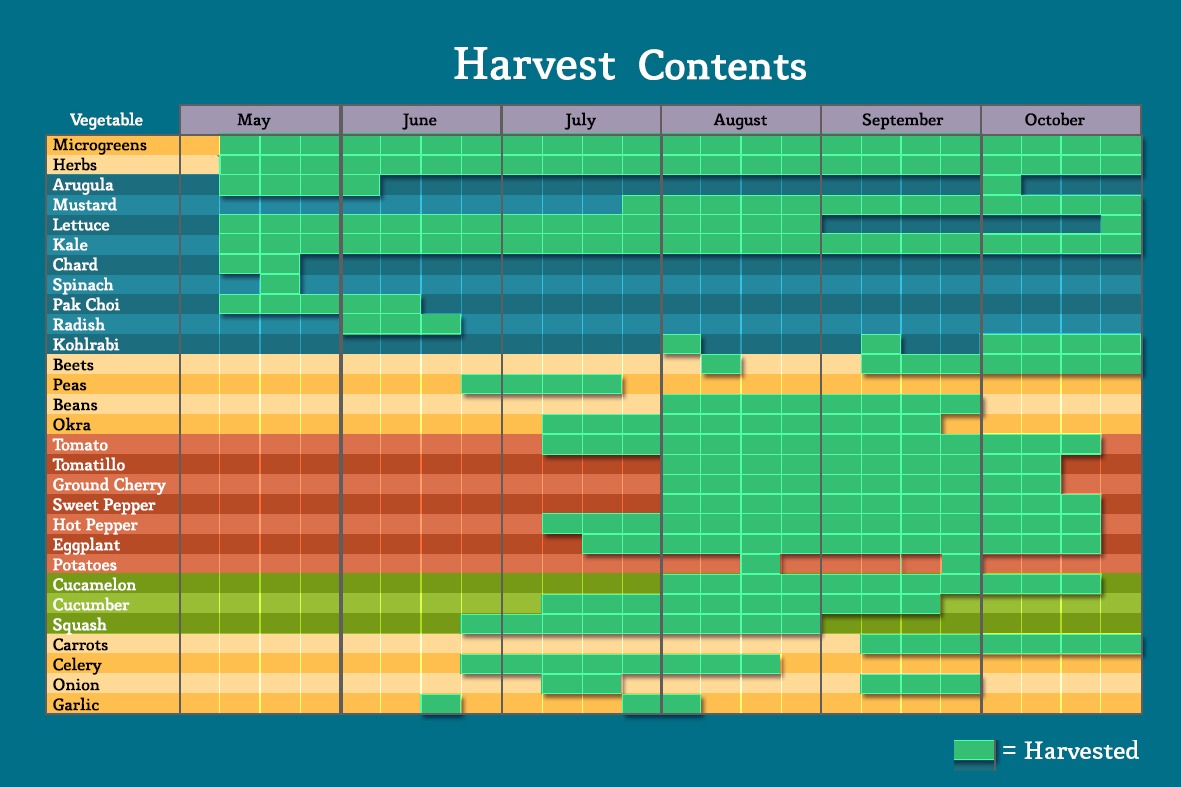 What we harvest at BUFCO Lab over time What we harvest at BUFCO Lab over time |
 How much we harvest at BUFCO Lab over time How much we harvest at BUFCO Lab over time |
|
|
|
|
This bounty didn’t get there by itself. It is the culmination of countless hours of physical labour and multiple, daily micro-decisions, each as individual as the gardener themself.
Learning how and when to harvest requires powers of observation, patience, experience and a willingness to mess up now and then. Always aim for the peak of ripeness. Harvest too soon and some crops end up bitter and hard. Harvest too late and depending on the crop, it can be mushy, bitter, diseased, overgrown, gone to flower or even worse, it can be stolen or mangled by those irritatingly cute squirrels. How many times have you left a gorgeous, almost red pepper on the plant until tomorrow only to discover it the next day on the ground, half eaten and mangled? Seize the moment and harvest today! (And consider installing some kind of critter-barrier to keep them out!)
Each crop is different. Some crops will ripen off the vine and some won’t. Tomatoes can be harvested when they are quite green and will happily transform into their ripened state on a window sill or kitchen counter. It has become our general practice to harvest tomatoes early, before wildlife finds them, and let them ripen indoors. They taste just as good and there are unblemished by teeth marks. Peppers, on the other hand will stubbornly stay the colour they were when you picked them. Keep in mind, there is a difference between a fruit reaching maturity and reaching peak ripeness. A mature fruit can ripen. When a fruit has ripened, it has reached maximum sweetness. For more details on ripening, check out this fascinating article by Melissa J. Will, an Ontario gardener in Zone 6 (like us).
When trying to decide if a fruit is ready for picking, don’t use grocery store sizes as a guide. We all want that giant broccoli or cabbage head but homegrown produce will often be smaller than its conventional counterpart which has been pumped full of water to increase its weight. If you leave broccoli or cauliflower too long, they will bolt, which means they go to flower and then form seeds, and that’s when the flavour and texture decline. So don’t delay.
|
|
|
|
Harvesting can be fraught with psychological barriers too. Many gardeners love the look of a lush and thriving garden and lament its less than neat and perfect appearance after harvest. It’s important to expect and accept that a vegetable garden undergoes more transformations than an ornamental garden. There will be a visual ebb and flow with every new succession so don’t get too wedded to its appearance at any given time as it will be everchanging. Veggie gardening is an exercise in living with impermanence.
Some gardeners are concerned with scarcity and worry that harvesting will deplete the supply. And while this is a realistic concern, pruning and picking can also encourage new growth. Many crops thrive with frequent harvests and will produce more than if their fruit were left on the plant to get overripe. Beans, peas and cucumbers are a great example.
Harvest fatigue can set in. Gardening can be hard work and sometimes we’re lazy and don’t feel like harvesting. We procrastinate and figure we’ve got plenty of time. But Mother Nature has her own schedule. Harvest when the fruit is ready, not when you are, and allow the garden to decide what’s for dinner tonight. It’s natural to feel bored with yet another quart of beans, bunch of kale or bushel of cherry tomatoes. Harvest them anyway and freeze them for the cold, dark days of winter when they will be ravenously appreciated.
Different seasons bring different harvesting tools and techniques and different storage requirements. Early spring is a time of lettuce abundance. It’s one of those versatile crops that can be harvested as a whole head by severing the stem at its base or can be harvested with a technique called cut-and-come-again, where you basically leave the stem and root in the soil to regrow for a second and often third time. You can use a pruners, sharp scissors, a kitchen knife, or fancy harvest knife. I like to Harvest-to-Thin which means removing every other plant as a baby, in a checkerboard fashion, so there is lots of space for the plants that are left behind to grow and expand. This works equally well for lettuce, beets, onions, carrots and many other crops.
When harvesting it’s good to have a variety of bowls, baskets or even a colander to put the harvest in. Don’t use metal bowls as they can heat up on a hot day which can make for some very limp lettuce. Try immersing lettuce in ice cold water immediately after harvesting to take the summer heat off. Another must-have in a veggie-gardener’s toolkit are mason jars. They are great vases for mint, basil, parsley and other herbs and will keep kale and collards crisp and fresh for days. To keep basil at is best, do not refrigerate as cool temperatures cause it to turn brown. Paper bags are great for beans and peppers but not for lettuces and greens which really do best in zip lock bags. Make sure to reuse these bags – rinse them between harvests and keep them out of our landfill and oceans.
 |
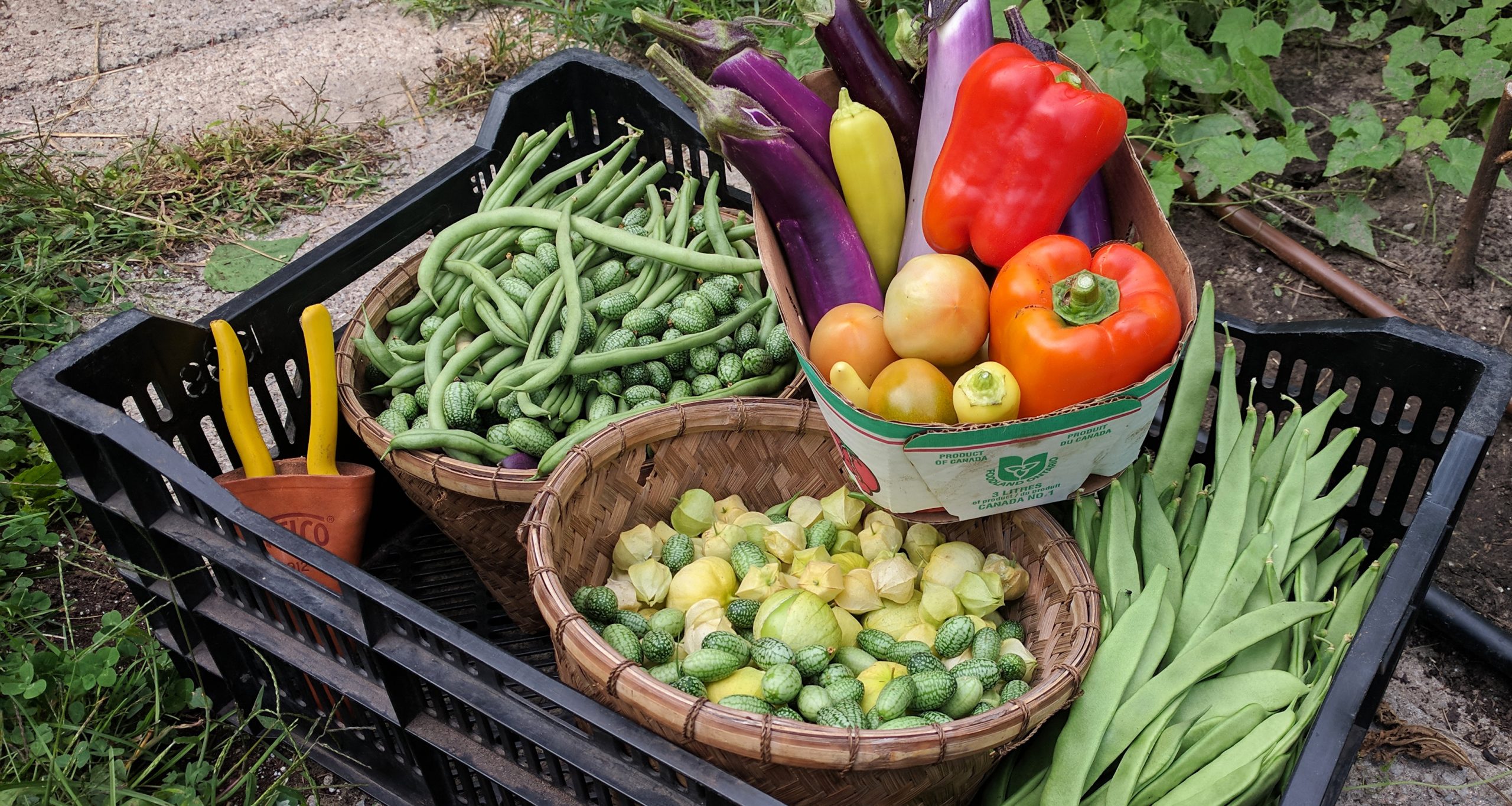 |
|
True, these eggplants could be bigger but they are mature and untouched by critters!
|
|
